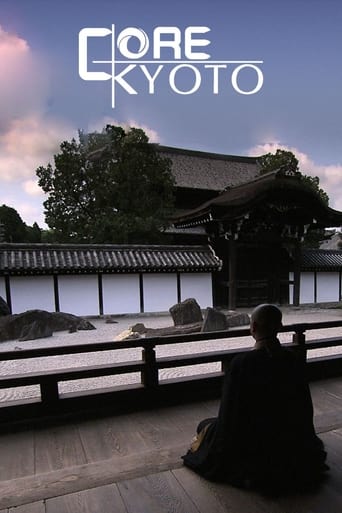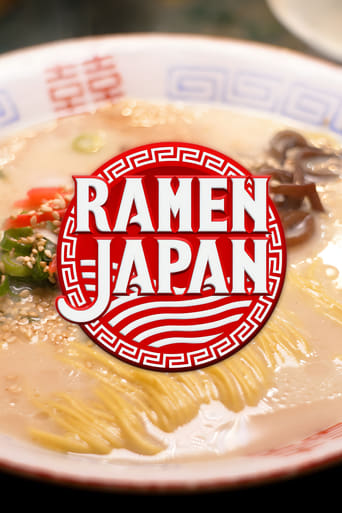Core Kyoto Season 6
The timeless heart of Japan's ancient capital. Against its rich backdrop of culture and tradition, today's Kyoto continues to innovate and inspire.
With 30 Day Free Trial!
Core Kyoto
2013 / NRThe timeless heart of Japan's ancient capital. Against its rich backdrop of culture and tradition, today's Kyoto continues to innovate and inspire.
Watch Trailer
Core Kyoto Season 6 Full Episode Guide
The events of the mid-1800's that led to the dawn of the modern era in 1868 shook Kyoto. The Tokugawa Shogunate collapsed, ending 700 years of samurai control. Youths battled for their conflicting ideals of imperialism, the exclusion of foreigners, and the opening of Japan to the world. Kyotoites defied the accepted norms and supported them in their endeavors. Retrace the steps of these heroes of the Meiji Restoration and discover the passion of the citizens, who survived these turbulent times.
Swordsmiths have forged swords in Kyoto for over a millennium. More than mere blades, these swords were also symbols of a spiritual culture. As they gained prestige, they became much sought-after gifts among domain lords from the 1600's. Swords also played major roles in the culture of the capital's bourgeoisie. In fall 2018, the Kyoto National Museum will hold the "Swords of Kyoto" exhibition. Discover the splendor of Kyoto-made swords through the passion of the people who forge and wield them.
Gold leaf is just 0.1 micron thick, and almost translucent, but it has a lasting luster. Gilt craftsmen utilize its qualities to accent brocade, lacquerware, and Buddhist structures and statues. In the ancient court, a soft and muted finish was favored over glitter and gloss, and this cultivated a Kyoto aesthetic. Today tradition is a stepping stone to new art forms, while gold flakes embellish sake, coffee, and traditional sweets. Discover the gleaming appeal of gold leaf culture in Kyoto.
Local-brand cosmetics are must-have souvenirs for women visiting Kyoto. New products in pretty Japanese-style packaging are constantly being released, made with gentle natural ingredients and methods developed over centuries, in colors used since ancient times. Maiko, the embodiment of "Kyoto beauty," apply their distinctive makeup according to strict rules and age-old conventions. Discover the "traditional yet new" beauty products of Kyoto that are so sought after by modern women.
Kyoto has a particular profusion of Shinto shrines and festivals. The sacred and ritual objects, and priestly vestments used in Shinto are made in accordance with a 1,000-year-old system of conventions governing laws and religious rites called Yusoku Kojitsu. Discover the dedication of artisans as they adhere to rules dictating the form, color, materials and techniques used to craft divine objects.
The biggest event in the mountain village of Hirogawara in northern Kyoto is held in late August. Men hurl flaming bundles into the air to light a torch towering 20m high in prayer for good health and harvests. Originating from a fire prevention ritual held when the main local industry was charcoal making, villagers still start preparing months in advance. Discover the efforts being made to maintain this 300-year-old summer festival despite concerns for the future of this depopulating village.
In Japan's humid summers, people cool themselves with fans that can be conveniently folded away. Large folding fans, or ogi, were first used as symbols of nobility in Heian court rituals over 1,000 years ago. Later, smaller folding fans, or sensu, were incorporated into festivals, the performing arts and tea ceremony, and came to be recognized as works of art embellished with gold, silver and lacquer. Still a part of life today, discover the cooling arts of Kyoto-made sensu through the ages.
Tatami's history stretches back 800 years to the imperial court. Later it evolved with the tea ceremony and with the lifestyles of ordinary people. Tatami has influenced comportment, and even determines the arrangement of participants and utensils in a tea ceremony room. Demand for high quality tatami in Kyoto ensures hand-sewing and other skills are passed on among expert craftsmen. Discover the flooring culture of the ancient capital that gives Japanese rooms their traditional atmosphere.
Japanese pepper, or sansho, is characterized by a fresh aroma and a tongue-numbing tingle. A sprinkle of it can dramatically perk up the flavor of food. Used in Japanese cooking for over 1,000 years, it has given birth to many local delicacies, as well as a proverb that means, "size isn't everything". Every part of the plant, from the young leaves to the flowers, berries and even the bark, is used. Discover why Kyoto chefs cherish this almighty magical seasoning that is both an herb and a spice.
The satoyama style of living in harmony with nature, and the customs that influenced life in the ancient capital, survive in the mountains north of central Kyoto. An old inn in the town of Hanase continues to serve the local specialty, tsumikusa (foraged wild foods) cuisine. Miyama is famous for its thatching tradition, and the local artisans use skills passed down for generations to re-thatch Kyoto's many temples and shrines. Discover the local customs that keep Kyoto's culture alive.
1,000 years ago, aristocrats would compose short waka poems seated by a babbling brook at the imperial palace, sipping sake and admiring the changes in the seasons. This outdoor party was revived at Jonangu Shrine in 1970. Experts tend the recreated period garden, and poets yearning for a bygone era strive to render the spirit of their Heian forebears. A court dancer provides a dance accompaniment. Discover the passion of those who breathe life into an elegant historical event.
Mirei Shigemori, a prolific landscape artist based in Kyoto from the late 1920's, is famous for the striking and abundant creativity of his gardens. He made a powerful impact on garden design in Kyoto with his checkerboard-patterned gardens and dry karesansui gardens that use dynamic rock groupings, such as Hasso-no-niwa at Tofuku-ji and Joko-no-niwa at Matsunoo Taisha. Discover the ageless modernity of Mirei's revolutionary designs that continue to stimulate, inspire and influence people today.
Vividly painted clamshells and a pristine cypress helmet -- these and other works bear a legacy of beauty and formality dating back over 1,200 years to the Heian dynasty. Behind them lies a code of practices governing the color and form of all aspects of Heian court life from rites to attire. It remains foremost in artisans' minds as they strive to give their work dignity and form. Discover the fervent desire of the imperial court for health and happiness through the artisans' reproductions.
Red and black demons beating drums and gongs dance through the streets of Kyoto's north in the Yasurai Matsuri, one of the city's three most curious festivals. In days of old, pestilence ran rampant every year when the cherry blossoms fell. Locals believed the 2 were linked, so with lively dances they lured deities of plagues under a bright umbrella to return them to the shrine for the year. Discover local beliefs through the lens of a festival that continues in this age of advanced medicine.
Maiko are the charming symbol of Kyoto's kagai entertainment districts. Their hairstyle and hair ornaments are key elements of their kawaii appeal. The ornaments are changed every month to reflect the flowers of the season, while the hairstyle differs according to what stage a maiko is in her career. The artisans making the items worn by maiko support the girls as though they were their own daughters. Discover the warmth of the people contributing to kagai culture through maiko hair ornaments.
Hot green tea poured over steamed rice topped with salted kombu kelp and other flavorings is commonly known as ochazuke, but called bubuzuke in Kyoto. Records from the 1800's show that common folk cooked rice once a day, at lunchtime, and for other meals they would pour hot tea over cold rice. Today topped with a colorful variety of pickles, or eel or sea bream, bubuzuke has become a local specialty in its own right. Discover the Kyoto spirit of frugality through a simple meal of rice and tea.
Kyoto City University of Arts was founded in 1880. Its educational policy emphasizes shasei – painting from life through intensive observation to glean a subject's true essence. It continues a practice advocated by 18th-century Kyoto artist, Maruyama Okyo. The university's alumni include leading painters in the art world and artisans in Kyoto's traditional arts and crafts. Discover the ethos underlying Kyoto art through the eyes of contemporary students of Nihonga Japanese-style painting.
The year end begins in mid-December. Maiko and geiko pay their respects to teachers. Decorations and other seasonal goods enjoy brisk sales at markets, homes are decorated and osechi cuisine is prepared. On New Year's Eve people give thanks for the old year at Yasaka Jinja, and the next day the Toshigami deity brings the New Year to every home. Families exchange greetings and feast on osechi with gratitude to the deity. Discover how Kyotoites revere the New Year through their long-held customs.
Kyotoites in days of old valued high quality fabric and woven textiles from abroad like gold. Pieces of these fabrics have been handed down and continue to fascinate people today. Their eternal beauty is preserved through repurposing as tea utensil pouches, tobacco holders, obi sashes and even as works of art. Weavers strive to learn the techniques used in days gone by in order to reproduce them. Discover the culture of reverence for the great beauty and skill to be found in old fabric pieces.
Mount Kurama, located north of urban Kyoto, is steeped in legend. Goblin-like creatures called Tengu are believed to live deep in the forest, where one allegedly taught swordsmanship to a 12th-century samurai general. Other legends swirl around Kurama-dera, the main temple. Kifune Jinja is dedicated to the water deity and draws many women wanting to discover their fortunes in love. Discover the mystic energy that surrounds one of Kyoto's prime "power spots" through the local folklore.
Free Trial Channels
Seasons


















































